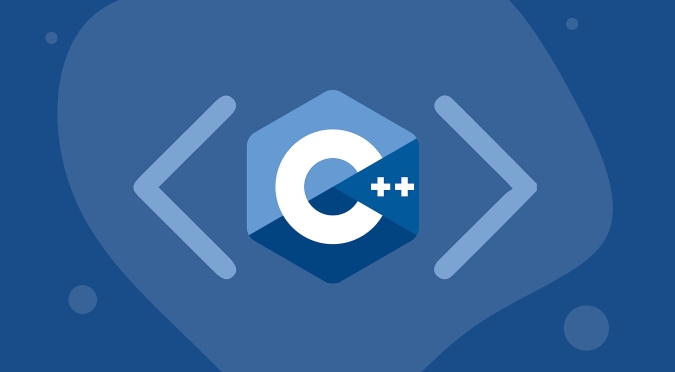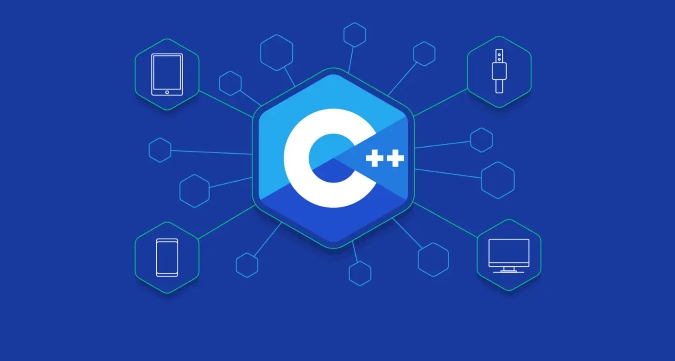Function hiding in C occurs when a derived class defines a function with the same name as a base class function, making the base version inaccessible through the derived class. This happens when the base function isn’t virtual or signatures don’t match for overriding, and no using declaration is used. 1. It blocks all overloads of the base function. 2. Name lookup stops at the derived class. 3. Fix it using using Base::func, explicit calls, or renaming. 4. Useful when intentionally restricting access but often unintended and should be managed carefully.

Function hiding in C is when a function in a derived class prevents the base class version of the same function from being accessible through the derived class. This usually happens when you have a function with the same name (but possibly different parameters or return type) in both the base and derived classes.

It’s important to note that this behavior is different from function overriding, which only applies to virtual functions and maintains a connection between the base and derived versions. Function hiding completely hides the base class's function when accessed via the derived class.

How Does Function Hiding Happen?
Function hiding occurs in C under these conditions:
- You define a function in a derived class with the same name as a function in the base class.
- The function in the base class is not declared virtual, or even if it is, but the signatures don't match exactly for override.
- The derived class does not explicitly use
using BaseClass::functionName;to bring the base version into scope.
For example:

class Base {
public:
void show() { cout << "Base show"; }
};
class Derived : public Base {
public:
void show(int x) { cout << "Derived show with int"; }
};Now, if you try to call show() without an argument on a Derived object, it won’t find the base version — it's hidden.
Why Does It Happen?
C uses a rule called name lookup: when you call a function like obj.show(), the compiler starts looking at the class of obj and stops as soon as it finds any function named show. If Derived has a show, it doesn’t bother checking Base.
This means even if the parameter lists are different, once you declare a function with the same name in the derived class, all base class overloads are hidden.
How to Fix or Avoid It
If you want to keep access to both versions of the function, there are a couple of options:
Use the
usingdeclaration in the derived class:class Derived : public Base { public: using Base::show; // brings Base's show into scope void show(int x) { cout << "Derived show with int"; } };Now calling
obj.show()will work again, andobj.show(5)will call the derived version.Alternatively, call the base class function explicitly:
Derived d; d.Base::show(); // calls Base's show
Or rename one of the functions to avoid conflict if hiding was unintentional.
- You're designing a derived class and intentionally want to remove access to certain inherited functions.
- You’re replacing functionality entirely and don’t want old versions to be used accidentally.
When Is It Useful?
Function hiding isn't always a bug — sometimes it's intentional. For example:
But in most cases, especially when working with inheritance hierarchies and expecting polymorphic behavior, it's better to use virtual functions and proper overriding instead of relying on function hiding.
So, function hiding is basically a side effect of how name resolution works in C . It can trip you up if you're not aware, but with using declarations or careful naming, you can manage it.
The above is the detailed content of What is function hiding in C ?. For more information, please follow other related articles on the PHP Chinese website!

Hot AI Tools

Undress AI Tool
Undress images for free

Undresser.AI Undress
AI-powered app for creating realistic nude photos

AI Clothes Remover
Online AI tool for removing clothes from photos.

Clothoff.io
AI clothes remover

Video Face Swap
Swap faces in any video effortlessly with our completely free AI face swap tool!

Hot Article

Hot Tools

Notepad++7.3.1
Easy-to-use and free code editor

SublimeText3 Chinese version
Chinese version, very easy to use

Zend Studio 13.0.1
Powerful PHP integrated development environment

Dreamweaver CS6
Visual web development tools

SublimeText3 Mac version
God-level code editing software (SublimeText3)

Hot Topics
 How to handle high DPI display in C?
Apr 28, 2025 pm 09:57 PM
How to handle high DPI display in C?
Apr 28, 2025 pm 09:57 PM
Handling high DPI display in C can be achieved through the following steps: 1) Understand DPI and scaling, use the operating system API to obtain DPI information and adjust the graphics output; 2) Handle cross-platform compatibility, use cross-platform graphics libraries such as SDL or Qt; 3) Perform performance optimization, improve performance through cache, hardware acceleration, and dynamic adjustment of the details level; 4) Solve common problems, such as blurred text and interface elements are too small, and solve by correctly applying DPI scaling.
 How to understand DMA operations in C?
Apr 28, 2025 pm 10:09 PM
How to understand DMA operations in C?
Apr 28, 2025 pm 10:09 PM
DMA in C refers to DirectMemoryAccess, a direct memory access technology, allowing hardware devices to directly transmit data to memory without CPU intervention. 1) DMA operation is highly dependent on hardware devices and drivers, and the implementation method varies from system to system. 2) Direct access to memory may bring security risks, and the correctness and security of the code must be ensured. 3) DMA can improve performance, but improper use may lead to degradation of system performance. Through practice and learning, we can master the skills of using DMA and maximize its effectiveness in scenarios such as high-speed data transmission and real-time signal processing.
 How to understand ABI compatibility in C?
Apr 28, 2025 pm 10:12 PM
How to understand ABI compatibility in C?
Apr 28, 2025 pm 10:12 PM
ABI compatibility in C refers to whether binary code generated by different compilers or versions can be compatible without recompilation. 1. Function calling conventions, 2. Name modification, 3. Virtual function table layout, 4. Structure and class layout are the main aspects involved.
 How to use the chrono library in C?
Apr 28, 2025 pm 10:18 PM
How to use the chrono library in C?
Apr 28, 2025 pm 10:18 PM
Using the chrono library in C can allow you to control time and time intervals more accurately. Let's explore the charm of this library. C's chrono library is part of the standard library, which provides a modern way to deal with time and time intervals. For programmers who have suffered from time.h and ctime, chrono is undoubtedly a boon. It not only improves the readability and maintainability of the code, but also provides higher accuracy and flexibility. Let's start with the basics. The chrono library mainly includes the following key components: std::chrono::system_clock: represents the system clock, used to obtain the current time. std::chron
 How to optimize code
Apr 28, 2025 pm 10:27 PM
How to optimize code
Apr 28, 2025 pm 10:27 PM
C code optimization can be achieved through the following strategies: 1. Manually manage memory for optimization use; 2. Write code that complies with compiler optimization rules; 3. Select appropriate algorithms and data structures; 4. Use inline functions to reduce call overhead; 5. Apply template metaprogramming to optimize at compile time; 6. Avoid unnecessary copying, use moving semantics and reference parameters; 7. Use const correctly to help compiler optimization; 8. Select appropriate data structures, such as std::vector.
 What is real-time operating system programming in C?
Apr 28, 2025 pm 10:15 PM
What is real-time operating system programming in C?
Apr 28, 2025 pm 10:15 PM
C performs well in real-time operating system (RTOS) programming, providing efficient execution efficiency and precise time management. 1) C Meet the needs of RTOS through direct operation of hardware resources and efficient memory management. 2) Using object-oriented features, C can design a flexible task scheduling system. 3) C supports efficient interrupt processing, but dynamic memory allocation and exception processing must be avoided to ensure real-time. 4) Template programming and inline functions help in performance optimization. 5) In practical applications, C can be used to implement an efficient logging system.
 The difference between programming in Java and other languages ??Analysis of the advantages of cross-platform features of Java
May 20, 2025 pm 08:21 PM
The difference between programming in Java and other languages ??Analysis of the advantages of cross-platform features of Java
May 20, 2025 pm 08:21 PM
The main difference between Java and other programming languages ??is its cross-platform feature of "writing at once, running everywhere". 1. The syntax of Java is close to C, but it removes pointer operations that are prone to errors, making it suitable for large enterprise applications. 2. Compared with Python, Java has more advantages in performance and large-scale data processing. The cross-platform advantage of Java stems from the Java virtual machine (JVM), which can run the same bytecode on different platforms, simplifying development and deployment, but be careful to avoid using platform-specific APIs to maintain cross-platformity.
 C in Specific Domains: Exploring Its Strongholds
May 06, 2025 am 12:08 AM
C in Specific Domains: Exploring Its Strongholds
May 06, 2025 am 12:08 AM
C is widely used in the fields of game development, embedded systems, financial transactions and scientific computing, due to its high performance and flexibility. 1) In game development, C is used for efficient graphics rendering and real-time computing. 2) In embedded systems, C's memory management and hardware control capabilities make it the first choice. 3) In the field of financial transactions, C's high performance meets the needs of real-time computing. 4) In scientific computing, C's efficient algorithm implementation and data processing capabilities are fully reflected.






